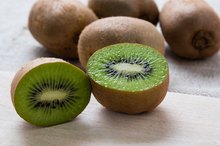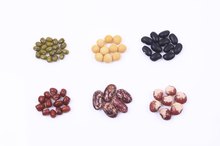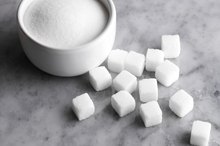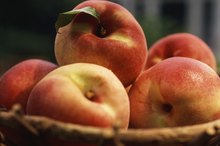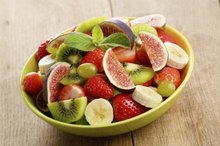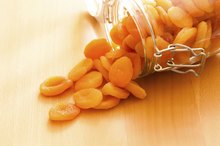What does fact checked mean?
At Healthfully, we strive to deliver objective content that is accurate and up-to-date. Our team periodically reviews articles in order to ensure content quality. The sources cited below consist of evidence from peer-reviewed journals, prominent medical organizations, academic associations, and government data.
- The American Heart Association: Naturally occuring sugars and added sugars
- Harvard Medical School: Glycemic index and glycemic load for 100+ foods
The information contained on this site is for informational purposes only, and should not be used as a substitute for the advice of a professional health care provider. Please check with the appropriate physician regarding health questions and concerns. Although we strive to deliver accurate and up-to-date information, no guarantee to that effect is made.
Is Fresh Fruit Included in a Sugar-Free Diet?
Based on nutritional research that shows the negative health effects of sugar, many people make a point of reducing their consumption of the sweet stuff. But there is a lot of confusion about where sugar is found and what foods should be avoided. Fresh fruits in their whole, natural form are typically allowed on a low- sugar diet. If you have been told to reduce the sugar in your diet because you have diabetes or another medical condition, consult with your doctor about what foods you should be eating.
Choose the Right Type
When trying to reduce sugar in your diet, learn the difference between added sugar and naturally occurring sugar 1. Naturally occurring sugar is found in whole foods that have not been processed in any way. An example of a natural sugar is lactose, which is found in milk. Added sugar is placed into food products during cooking, processing or preparation. An example of an added sugar is combining chocolate syrup with milk to make chocolate milk. According to the American Heart Association, it is added sugar -- not naturally occurring sugar -- that should be reduced 1. The sugar in fresh fruit is naturally occurring and is typically allowed on a low-sugar diet.
Nutrient-Dense Food
What Happens to Sugar Levels in the Blood While Fasting?
Learn More
Whole, fresh fruits in their natural form are loaded with nutrients. They are a rich source of vitamins, minerals, fiber, antioxidants and beneficial phytochemicals. Regular fruit consumption is associated with a reduced risk of heart disease, stroke, hypertension, diabetes and certain types of cancer. Be wary of any diet that severely restricts your fruit consumption in an effort to improve health.
- Whole, fresh fruits in their natural form are loaded with nutrients.
- Regular fruit consumption is associated with a reduced risk of heart disease, stroke, hypertension, diabetes and certain types of cancer.
The Fiber Factor
Most varieties of fruit are high in fiber, which slows the digestion of their natural sugars. Fresh fruits tend to have a smaller effect on blood sugar. The glycemic load is a measure of how a carbohydrate-containing food affects blood sugar. High-glycemic-load carbohydrates spike the blood sugar quickly, while low-glycemic-load carbohydrates have a much more modest effect on blood sugar. According to the Harvard Medical School, many fruits fall in the low-glycemic-load category, with a glycemic load of 10 or less 2.
- Most varieties of fruit are high in fiber, which slows the digestion of their natural sugars.
- The glycemic load is a measure of how a carbohydrate-containing food affects blood sugar.
Ignore the Juice
Should I Eat Kiwi Fruit If I Take Blood Thinners?
Learn More
If you are trying to limit the sugar in your diet, focus on fruits in their whole and natural form. Limit your consumption of fruit juices and dried fruits, which are much more concentrated sources of sugar. For example, an orange has 12 grams of sugar, but an 8-ounce glass of orange juice has 21 grams of sugar. Similarly, a cup of grapes has 16 grams of sugar, while 1/2 cup of raisins has 43 grams of sugar.
- If you are trying to limit the sugar in your diet, focus on fruits in their whole and natural form.
- Similarly, a cup of grapes has 16 grams of sugar, while 1/2 cup of raisins has 43 grams of sugar.
Related Articles
References
- The American Heart Association: Naturally occuring sugars and added sugars
- Harvard Medical School: Glycemic index and glycemic load for 100+ foods
- Rippe JM, Angelopoulos TJ. Sucrose, High-Fructose Corn Syrup, and Fructose, Their Metabolism and Potential Health Effects: What Do We Really Know? Adv Nutr. 2013;4(2):236-245. doi:10.3945/an.112.002824
- U.S. Department of Agriculture. Cut Down on Added Sugars. 2016.
- Rampersaud GC, Kim H, Gao Z, House LA. Knowledge, perceptions, and behaviors of adults concerning nonalcoholic beverages suggest some lack of comprehension related to sugars. Nutr Res. 2014;34(2):134-142. doi:10.1016/j.nutres.2013.11.004
- Tandel KR. Sugar substitutes: Health controversy over perceived benefits. J Pharmacol Pharmacother. 2011;2(4):236-243. doi:10.4103/0976-500X.85936
- Bray GA. Energy and Fructose From Beverages Sweetened With Sugar or High-Fructose Corn Syrup Pose a Health Risk for Some People. Adv Nutr. 2013;4(2):220-225. doi:10.3945/an.112.002816
- American Dental Association. American Dental Association Encouraged by Soda Makers’ Pledge to Promote Smaller Sizes, Less Sugar. 2014.
- U.S. Department of Health and Human Services and U.S. Department of Agriculture. 2015–2020 Dietary Guidelines for Americans. 8th Edition. 2015.
Writer Bio
Dr. Thomas L. Halton has been a nutrition researcher since 2004. He authored “The Weight Loss Triad” and has been published in the "New England Journal of Medicine." His research has been featured on CNN, The Wall Street Journal, USA Today, and Time Magazine. Dr. Halton graduated from Harvard University with a doctorate in nutrition.

